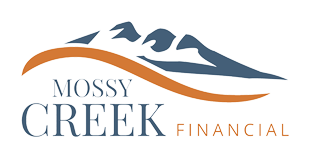Tax-efficient investing is essential for maximizing your investment returns. In 2024, the investment landscape continues to evolve with new tax laws, economic conditions, and market opportunities. By implementing tax-efficient strategies, investors can keep more of their hard-earned money while working towards their financial goals.
1. Utilize Tax-Advantaged Accounts
One of the most straightforward ways to invest tax-efficiently is by taking full advantage of tax-advantaged accounts. These include:
- Individual Retirement Accounts (IRAs): Contributions to Traditional IRAs may be tax-deductible, and the investments grow tax-deferred until withdrawals are made in retirement. Roth IRAs, on the other hand, allow for tax-free growth and tax-free withdrawals in retirement, provided certain conditions are met.
- 401(k) Plans: Employer-sponsored 401(k) plans often come with the benefit of employer matching contributions, which is essentially free money. Contributions are pre-tax, reducing your taxable income, and investments grow tax-deferred.
- Health Savings Accounts (HSAs): HSAs offer triple tax benefits: contributions are tax-deductible, investments grow tax-free, and withdrawals for qualified medical expenses are tax-free. In 2024, HSA contribution limits have increased, making these accounts even more attractive.
2. Asset Location Strategy
Asset location refers to placing investments in the most tax-efficient accounts. For example:
- Taxable Accounts: Hold investments that generate qualified dividends or long-term capital gains, as these are typically taxed at lower rates. Municipal bonds may generate tax-free interest and can also be a good fit.
- Tax-Deferred Accounts (e.g., IRAs, 401(k)s): To defer taxes, place investments that generate significant taxable income, such as bonds or real estate investment trusts (REITs), in these accounts.
- Tax-Free Accounts (e.g., Roth IRAs): To maximize the tax-free growth of your investments, consider placing them in Roth accounts.
3. Tax-Loss Harvesting
Tax-loss harvesting involves selling investments that have declined in value to offset gains from other investments, thereby reducing your overall tax liability. In 2024, this strategy remains a powerful tool for investors, particularly during volatile market periods. Be mindful of the “wash sale rule,” which prohibits repurchasing the same or substantially identical security within 30 days of the sale, as this would nullify the tax benefit.
4. Qualified Charitable Distributions (QCDs)
For investors aged 70½ or older, Qualified Charitable Distributions (QCDs) offer a tax-efficient way to support charitable causes. QCDs allow direct transfers from an IRA to a qualified charity, which can satisfy the Required Minimum Distribution (RMD) for the year without increasing your taxable income.
5. Roth Conversions
Consider whether a Roth conversion makes sense for your financial situation in 2024. Converting assets from a Traditional IRA or 401(k) to a Roth IRA can result in a tax bill today, but it allows for tax-free growth and withdrawals in the future. This strategy is particularly useful if you expect to be in a higher tax bracket later or if you want to minimize future RMDs.
6. Pay Attention to Capital Gains
Managing capital gains is crucial in a tax-efficient investing strategy:
- Long-Term vs. Short-Term: Long-term capital gains (on assets held for more than a year) are taxed at lower rates than short-term gains. Hold onto investments for at least a year to benefit from these lower rates if possible.
- Offset Gains with Losses: You can use capital losses to offset capital gains, potentially eliminating or reducing the tax on those gains.
7. Consider Your Tax Bracket
Your tax bracket plays a significant role in determining your overall tax liability. If you expect to be in a lower tax bracket in the future, it may make sense to defer income. Conversely, accelerating income or making Roth contributions could be beneficial if you anticipate being in a higher tax bracket.
8. Review Estate Planning Strategies
Tax-efficient investing isn’t just about reducing taxes during your lifetime; it’s also about planning for the future. Consider:
- Gifting Strategies: Gifting appreciated assets to family members in lower tax brackets can reduce your overall tax burden.
- Step-Up in Basis: At death, beneficiaries receive a step-up based on inherited assets, which can significantly reduce capital gains taxes if those assets are later sold.
9. Stay Informed and Adapt
Tax laws constantly change, and what works today may not be as effective tomorrow. Staying informed about tax changes in 2024 and beyond is crucial for maintaining a tax-efficient portfolio. Regularly review your investment strategy and consult a financial professional to help ensure you take full advantage of available opportunities.
In 2024, tax-efficient investing remains a cornerstone of effective wealth management. Investors can significantly enhance their after-tax returns by utilizing tax-advantaged accounts, strategically placing assets, harvesting losses, and staying informed about tax laws. Remember, the key to successful tax-efficient investing is minimizing taxes and aligning your investment strategy with your long-term financial goals.
Richard Hall does not offer tax advice. Please consult a tax professional.

